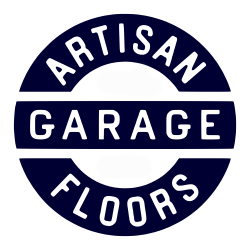Epoxy Glossary for Beginners – Terms and Definitions for Garage Flooring
Your Garage
Concrete footings underneath the walls of the room, typically around 12″ to 48″ tall. They are usually found when the home is bermed into a hillside.
A short, concrete footing underneath the walls of the garage. Because garage floors typically have slope to allow for drainage, the stem walls provide a level base for the walls of the room to sit upon.
The surface to which the coating is applied, in this case, the concrete garage floor.
Materials
Vinyl or Quartz flakes or granules that add color, texture and strength to your epoxy floor.
Found on the top surface of the concrete, it is a layer composed of fine sediment and residue left as the water evaporates from the concrete as it dries. We remove this weak, non-durable layer during the surface preparation process.
Techniques
The process of using a paint roller to create a smooth, even finish, after distributing the material with a squeegee.
The process of distributing flake or another aggregate into the wet material.
A transition that is installed where the floor meets the walls, allows a seamless transition of the coating from the floor, up the wall a specified distance (usually 4″-6″).
The process of applying material around the edges, and details with a paintbrush or small roller.
Describes the thickness of individual coats of material, or the entire coating system.
Wet Film Thickness (WFT): The thickness of the wet material when it is first applied.
Dry Film Thickness (DFT): The thickness of the coating once it is fully-cured, and all solvents or reducers have evaporated.
A complete saturation of the wet material with flake or aggregate. Also known as “Broadcast to Rejection,” “Full-chip,” and “Full-Flake.”
A coating, or single-coat of material, that doesn’t contain any aggregate.
Allowing the materials to adjust to a certain temperature before it is installed.
An alternate method to Diamond-Grinding, it uses a machine that sprays the surface of the concrete with small steel shot, with a lot of force. It removes the very top layer of the concrete, removing contamination and leaving a textured surface.
Conditions
The current air temperature and weather conditions.
An oily residue on the surface of an epoxy floor after curing, it is usually caused by high humidity or condensation.
Describes the materials resistance to weight or impact.
A measurement of the roughness of the concrete surface to be coated. Coatings require a textured-profile in order to form a strong bond with the concrete.
The International Concrete Repair Institute defines these from CSP-1 to CSP-9. CSP-1 has almost no texture, and CSP-9 has a very coarse texture.
Professional garage floor systems typically require a CSP-3, achieved by diamond-grinding or shot-blasting. Acid-washing is only capable of achieving a CSP-1 profile.
Round separations or blisters that form when the material is wet, usually caused by surface contamination. Their appearance resembles the eye of a fish.
Material Safety Data Sheets are documents containing detailed health & safety information about each particular chemical or product used.
A measure of how much water is passing through, and out of the concrete slab.
Describes trapped air that is escaping from within the slab, through the coating. Out-gassing also describes gasses that are formed as the coating undergoes the chemical reactions that are either released from, or become trapped, in the coating.
The amount of time the material will remain fluid in the bucket once it has been mixed.
The amount of time the material must cure before the next coat can be applied.
A texture on the surface of the concrete, created by diamond-grinding or shot-blasting. It allows the coating to form a significantly stronger bond with the garage floor.
Describes the “thickness” of the liquid material, such as epoxy. For example, Molasses has a high-viscosity.
The amount of time from when the material is mixed until it can no longer be worked with.
